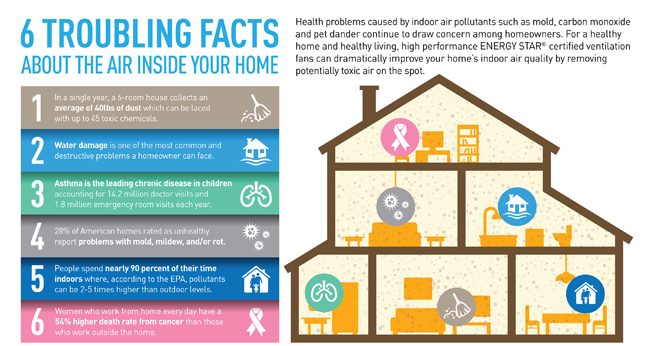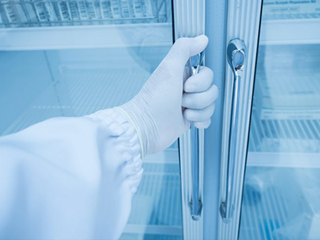
photo credit: www.foobot.io
In the 1970s, the approach to energy efficiency compromised Indoor Air Quality (IAQ). Efforts should concentrate on net-zero energy buildings that do not repeat past mistakes. Forums have discussed sustainable buildings concentrating on energy use. Indoor air quality and its effect on health should factor into building design. IAQ has worked with ventilation standards such as the American Society of Heating, Refrigerating and Air-Conditioning Engineers (ASHRAE) Standard 62.1. This approach improved IAQ in buildings. However, ASHRAE Indoor Air Quality requires more than minimum ventilation rates.
The International Society for Indoor Air Quality and Climate (ISIAQ), with ASHRAE and other organizations, held conferences that advanced IAQ practices. While these efforts were valuable, the industry still lacked the comprehensive and practical resources on achieving good IAQ.
Air quality is a much-discussed subject among building owners. The approved safe levels of Volatile Organic Compounds (VOCs) are always changing, as with control regulations. The Environmental Protection Agency (EPA) list of VOCs covers identifying and reducing hazardous substances.
Regulatory bodies recommend using indoor air quality sensors to monitor the (IAQ) of private and public buildings. AKCP has such sensors available.

IAQ Problems and Perspectives
Having strict IAQ and ventilation requirements can improve the quality of the air. Measuring VOC concentrations in private homes can be daunting. Environmental conditions, such as humidity and airflow, influence the levels of emission. Various regulatory bodies have different threshold limits and guidelines. The World Health Organization (WHO) provides guidelines for IAQ and ventilation.
- Update threshold limit of VOCs and pollutants helps towards better industrial hygiene.
- Knowing how VOCs affect the environment and people’s occupational health is paramount.
- Regular testing for VOCs is recommended for improving environmental and health outcomes.
To meet this need, ASHRAE collaborated with several organizations to published the Indoor Air Quality Guide: Best Practices for Design, Construction, and Commissioning.
Timeline on the Guide’s Development
The first idea for the ASHRAE Indoor Air Quality Guide goes back to the development of Standard 62.1. The 62.1 committee was tasked in 1997 to write the standards to facilitate its adoption and reference by building codes. That directive pre-supposes that the standard would contain only minimum requirements. As a result, it did not contain useful background information and case studies. Neither it discussed design approaches and technologies that could improve IAQ.
Scope of ASHRAE Indoor Air Quality Guide
The guide advises on the design of commercial and institutional buildings. This included but was not limited to office, retail, education, lodging, and public assembly buildings. There is no restriction on building size or type. Recommendations in this Guide now cover facilities that were included in ASHRAE 62.1. The scope was limited due to the resources and the need to complete within a prescribed amount of time.
It does not include all space types. The guide does addresses the interactions with the building and other systems. These include:
- Commercial kitchens
- Medical procedure rooms
- Natatoriums
- Cold storage facilities
- Laboratory
- Residential
- Industrial spaces.
Content and Organization of the Guide
Building owners and professionals understand the importance of IAQ. But they do not recognize the results of routine design decisions in air quality.
The Guide addresses the problem commercial buildings have had for several decades builders’ lack of experience in investigating, resolving, and avoiding these problems.
Design decisions that influence site selection include building orientation, location of outdoor air intakes, and how the building is heated, cooled, and ventilated are essential to good IAQ. Achieving high levels of building performance without following standards leads to IAQ problems. It is a step forward in attaining IAQ by providing a guideline for building professionals.
While a good design is critical to IAQ, improper installation damages it. The key to achieving IAQ is comprehensive planning that starts at design and continues until occupancy. This effort should focus on designing systems and assemblies critical to good IAQ.

Photo Credit: www.norada.com
Ineffective filtration and air cleaning.
Filtration controls indoor air pollutants, particularly in areas with poor outdoor air quality. The guide has detailed information that, when properly administered, improves IAQ performance.
The guide is arranged around these eight objectives:
- Manage the Design and Construction Process to Achieve Good IAQ;
- Control Moisture in Building Assemblies;
- Limit Entry of Outdoor Contaminants;
- Control Moisture and Contaminants Related to Mechanical Systems;
- Limit Contaminants from Indoor Sources;
- Capture and Exhaust Contaminants from Building Equipment and Activities;
- Reduce Contaminant Concentrations through Ventilation, Filtration, and Air Cleaning; and
- Apply More Advanced Ventilation Approaches.
The guide contains hundreds of drawings, photos, and case studies that illustrate the point. An outcome of the focus group discussion was making the Guide into a summary document. This can serve as a reference during conceptual design. A companion CD with more information to use in later project phases.
EPA IAQ Standards and Guidelines
Air quality is essential for people’s health, as well as the environment. Poor air quality indoors or outdoors causes adverse health problems.
This include:
- Nausea
- Headaches
- Skin irritation
- Sick building syndrome (SBS)
- Kidney failure
- Cancer.
Since people spend around 90% indoors, indoor air quality can significantly affect people’s health. Therefore, setting strict standards and guidelines is imperative. Although the threshold varies, the EPA listed several common VOCs and their threshold limit values in the US:
- PM2.5: Particulate matter is one of the more deadly forms of pollution. The size of the particles is so tiny they can get into the lungs causing health problems. PM2.5 are particles that are 2.5 μm or less in diameter. Their threshold limit value is 25 μg/m3, based on 24-hour data.
- CO: An odorless and colorless gas, carbon monoxide (CO) is one of the most toxic compounds found indoors. The American Conference of Governmental Industrial Hygienists (ACGIH) gives a threshold limit of 25 ppm for an 8-hour workday. The National Institute for Occupational Safety and Health (NIOSH) has a recommended exposure limit of 35 ppm.
- CO2: is a natural gas produced in the air, with an average outdoor concentration of 300-400 ppm. Indoor levels are higher due to the closed indoor spaces. Health effects can be observed at levels over 7,000 ppm. The occupational limits set by ACGIH are 5,000 ppm TLV-TWA* and 30,000 ppm TLV-STEL**.
- Radon: Radon is a radioactive gas formed by the decay of natural uranium in the soil. As radon is carcinogenic, there are no safe levels of exposure. Yet, the EPA has set an action level of 4 pCi/L.
- PAHs: Polycyclic aromatic hydrocarbons (PAHs) are hazardous semi-volatile organic compounds. Each PAH has different threshold limit values. Naphthalene, in particular, is the most volatile PAH. The recommended threshold limit is 10 ppm.
- Formaldehyde: One of the most common VOCs comes from many sources, such as furniture, incense burning, and cooking. Its threshold limit is 0.1 ppm TLV-TWA* and 0.3 ppm TLV-STEL**.
- Methylene chloride: Methylene chloride or dichloromethane found in products like solvents. It has an odor threshold of 250 ppm. Any long-term exposure can lead to problems with the central nervous system.
- NO2: Due to the adverse effects of nitrogen dioxide (NO2), the EPA strengthened its health guidelines and set a 1-hour standard at the level of 100 ppb.
*TLV-TWA: Threshold Limit Value – Time Weighted Average (usually 8 hours)
**TLV-STEL: Threshold Limit Value – Short Term Exposure Limit (usually 15 minutes)

Photo credit: www.buildings.com
Understanding and Improving IAQ
From smoking to car exhaust, sources of VOCs, PM2.5, and NO2 are all around. Understanding the origins of these is essential to decrease concentrations and associated health problems. There are a few necessary steps, which can help individuals improve IAQ.
- Buy low-VOC products
- Consider plants that can purify the air.
- Focus on good ventilation systems with HEPA filters
Buildings use Heating, Ventilation, and Air-Conditioning (HVAC) systems to improve IAQ. Case in point, the American Society of Heating, Refrigerating and Air-Conditioning Engineers (ASHRAE) standards are meticulously developed to help professionals enhance the ventilation of private and commercial buildings. Additionally, the Occupational Safety and Health Administration (OSHA) has strict standards on ventilation of educational and medical facilities.
The common cause of IAQ problems is excessive moisture. It leads to mold growth. Causes of moisture problems include:
- Roof leaks,
- Rain penetration,
- Design and construction defects,
- Inadequate building air pressures.
Poor outdoor air quality.
The usual means of dealing with IAQ is through ventilation with outside air. But this method presumes that the outside air is cleaner than the indoor air. In some locations, air ventilation can make the air worse. Poor outdoor air quality includes high concentrations of contaminants or pollutants. Green building programs recommend an across-the-board increase in ventilation rates.
Moisture and dirt in ventilation systems.
Dirt in ventilation with poor water handling leads to mold growth and more IAQ problems.
The conditions result from insufficient particle filtration, poor filter maintenance, and cooling coil condensation. Most IAQ problems can not be handled by typical outdoor air ventilation. Contaminants generated by building materials and substances brought into the building. High contaminant emissions of indoor sources are the cause of IAQ problems. The guide directs Issues of material selection, cleaning, and other indoor source concerns.

Photo Credit: www.pbs.twimg.com
Contaminants from indoor equipment and activities.
Occupancies and intense activities in commercial and institutional buildings stir up pollutants.
These activities help remove IAQ problems:
- Proper equipment operation
- Adequate exhaust ventilation
- Careful choices of materials.
Inadequate ventilation rates.
Buildings that are poorly ventilated increase the chance of IAQ problems. Inadequate ventilation may include:
- Lack of compliance with standards;
- Installation or maintenance problems
- Space use changes without the need to change ventilation rates.
The outdoor air intake level may be adequate. However, air distribution leaves some areas in the building poorly ventilated.
Conclusions
The IAQ Guide sets the standard by providing guidance for professionals. It contributes to improving IAQ, starting with a significant impact on today’s efforts to promote sustainable buildings.




